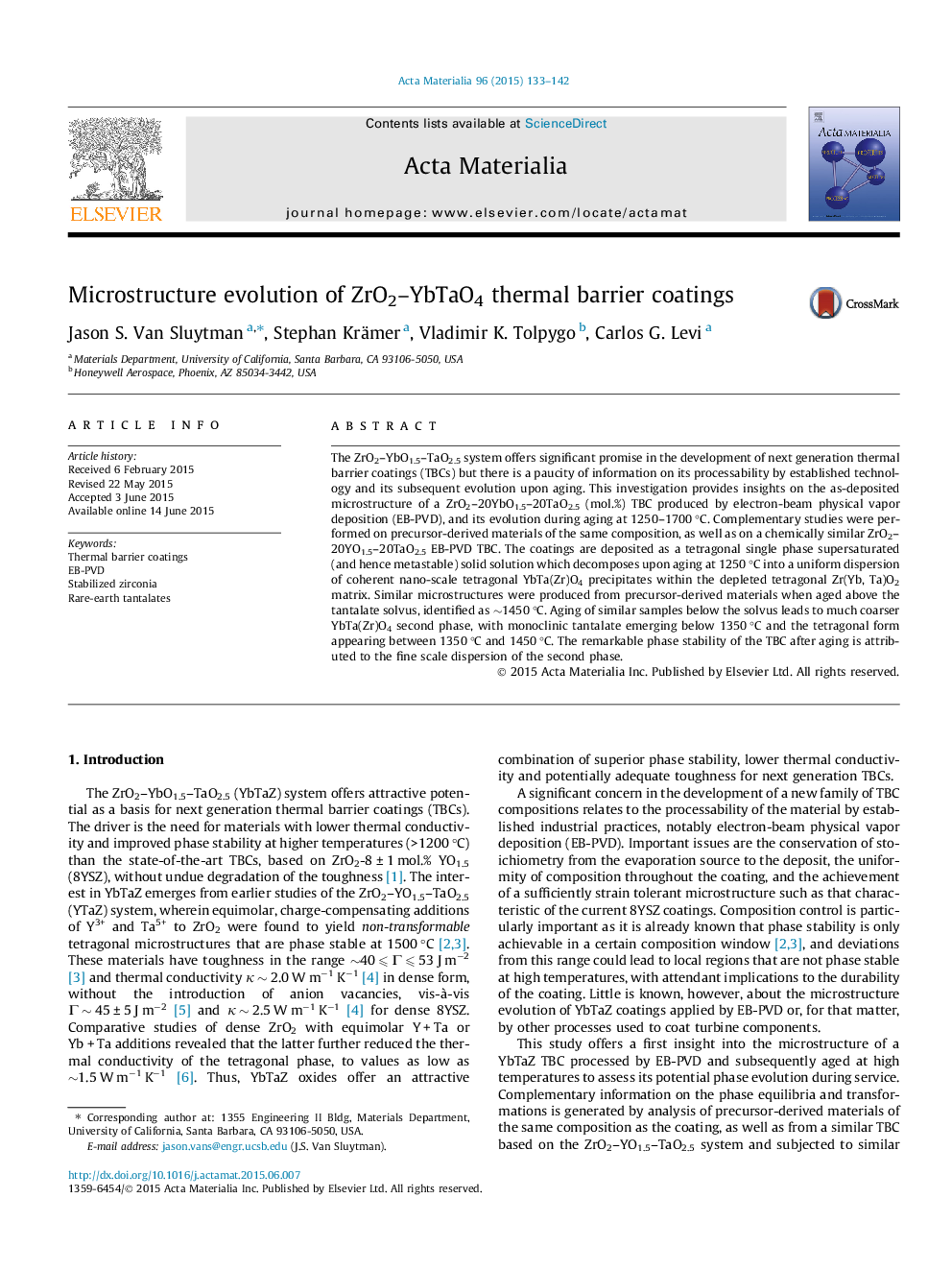| Article ID | Journal | Published Year | Pages | File Type |
|---|---|---|---|---|
| 7879679 | Acta Materialia | 2015 | 10 Pages |
Abstract
The ZrO2-YbO1.5-TaO2.5 system offers significant promise in the development of next generation thermal barrier coatings (TBCs) but there is a paucity of information on its processability by established technology and its subsequent evolution upon aging. This investigation provides insights on the as-deposited microstructure of a ZrO2-20YbO1.5-20TaO2.5 (mol.%) TBC produced by electron-beam physical vapor deposition (EB-PVD), and its evolution during aging at 1250-1700 °C. Complementary studies were performed on precursor-derived materials of the same composition, as well as on a chemically similar ZrO2-20YO1.5-20TaO2.5 EB-PVD TBC. The coatings are deposited as a tetragonal single phase supersaturated (and hence metastable) solid solution which decomposes upon aging at 1250 °C into a uniform dispersion of coherent nano-scale tetragonal YbTa(Zr)O4 precipitates within the depleted tetragonal Zr(Yb, Ta)O2 matrix. Similar microstructures were produced from precursor-derived materials when aged above the tantalate solvus, identified as â¼1450 °C. Aging of similar samples below the solvus leads to much coarser YbTa(Zr)O4 second phase, with monoclinic tantalate emerging below 1350 °C and the tetragonal form appearing between 1350 °C and 1450 °C. The remarkable phase stability of the TBC after aging is attributed to the fine scale dispersion of the second phase.
Related Topics
Physical Sciences and Engineering
Materials Science
Ceramics and Composites
Authors
Jason S. Van Sluytman, Stephan Krämer, Vladimir K. Tolpygo, Carlos G. Levi,
